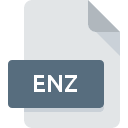.ENZ File Extension

EndNote Connection File
| Developer | Clarivate |
| Popularity | |
| Category | Settings Files |
| Format | .ENZ |
| Cross Platform | Update Soon |
What is an ENZ file?
The .ENZ file extension is associated with EndNote, a reference management software developed by Clarivate.
Specifically, .ENZ files are EndNote connection files. These files are essential for users of EndNote who need to connect to and import data from various online databases directly into their EndNote libraries.
The connection files streamline the process of fetching and managing bibliographic data, making research and citation management more efficient.
More Information.
EndNote, originally developed in 1988 by the Research Libraries Group (RLG), was acquired by Thomson Reuters in 2002 and later became part of Clarivate’s product suite.
As the software evolved, so did its capabilities, including the introduction of connection files. The .ENZ file format was developed to support the growing need for direct integration with academic databases, library catalogs, and other online sources.
The initial purpose of .ENZ files was to facilitate the connection between EndNote and various online information sources. Users could use these files to create direct links to databases and repositories, which allowed for more efficient retrieval and organization of bibliographic data.
Origin Of This File.
EndNote is a tool widely used by researchers, academics, and professionals for managing bibliographies and references.
The .ENZ file extension was introduced as part of EndNote’s efforts to enhance the functionality and ease of use of their software.
EndNote connection files (.ENZ) were created to allow users to integrate their EndNote library with external data sources seamlessly.
File Structure Technical Specification.
An .ENZ file is essentially a configuration file that contains information about how EndNote should connect to a specific database or online resource. The file includes various settings such as:
- Database URL: The web address or endpoint for the database or resource.
- Search Parameters: Details on how to query the database, including fields and search terms.
- Data Mapping: Instructions on how to map the data fields from the database to EndNote’s internal fields.
- Authentication: Any necessary credentials or tokens required to access the database.
These components are encoded in a format readable by EndNote’s connection manager. The file itself is a plain text file with a specific structure that EndNote interprets to establish a connection to the data source.
How to Convert the File?
Converting .ENZ files to other formats is generally not necessary, as these files are specific to EndNote and are used primarily for connection purposes. If you need to adapt or update an .ENZ file, you can:
- Edit the File: Since .ENZ files are plain text, you can open and edit them using a text editor. This allows you to update database URLs, search parameters, and other settings.
- Create New Connection Files: If you need a connection file for a different database or resource, you can create a new .ENZ file using EndNote’s connection file editor or download pre-configured files from EndNote’s website or user community.
Advantages And Disadvantages.
Advantages:
- Seamless Integration: The primary advantage of .ENZ files is their ability to provide seamless integration between EndNote and various databases. This integration streamlines the process of importing bibliographic data, saving users time and effort.
- Customization: Users can customize connection files to suit their needs, allowing for tailored searches and data retrieval from specific sources.
- Efficiency: Automating the connection to databases and repositories reduces manual data entry and potential errors, enhancing overall research efficiency.
Disadvantages:
- Maintenance: As databases and online resources update their systems, .ENZ files may require updates or maintenance to continue functioning correctly. This can be a challenge for users who are not technically inclined.
- Compatibility Issues: Different versions of EndNote or updates to database systems can lead to compatibility issues, requiring users to obtain updated .ENZ files or adjust their configurations.
- Limited Scope: .ENZ files are specific to EndNote and may not be compatible with other reference management software, limiting their utility outside of EndNote’s ecosystem.
How to Open ENZ?
Open In Windows
On Windows, .ENZ files are typically managed directly within EndNote:
- Open EndNote: Launch the EndNote application.
- Import Connection Files: Go to
Edit > Connection Files > Open Connection Fileand select the .ENZ file. You can also drag and drop the .ENZ file into the EndNote window.
Open In Linux
Linux users may face challenges with .ENZ files as EndNote is not natively supported on Linux. You can use tools like Wine to run EndNote on Linux:
- Install Wine: Install Wine to run Windows applications on Linux.
- Run EndNote: Use Wine to install and run EndNote.
- Open .ENZ Files: Once EndNote is running under Wine, follow the same steps as in Windows to import .ENZ files.
Open In MAC
On macOS, the process is similar:
- Open EndNote: Start the EndNote application.
- Import Connection Files: Navigate to
EndNote X9 > Preferences > Connection Filesand add the .ENZ file. Alternatively, drag and drop the file into the EndNote window.












